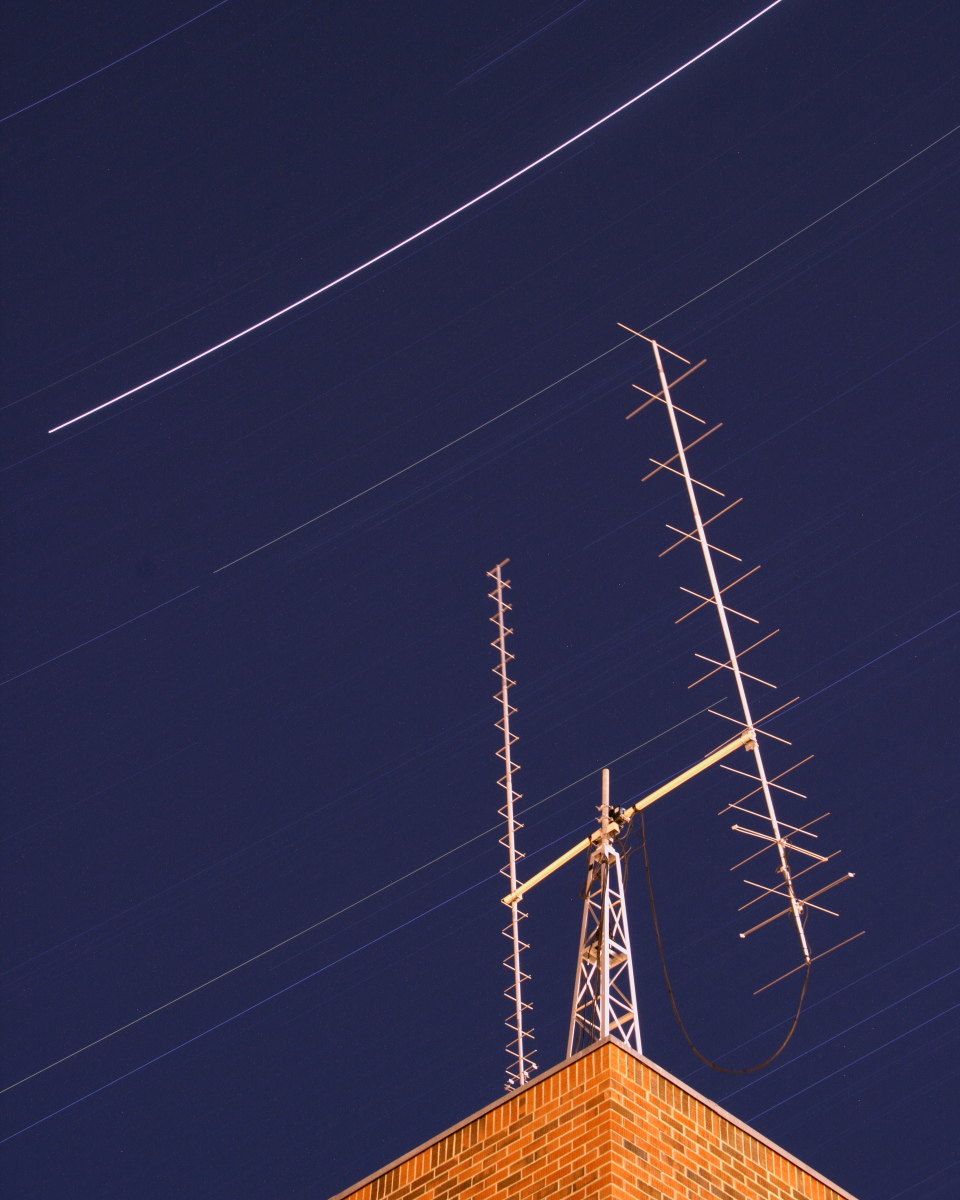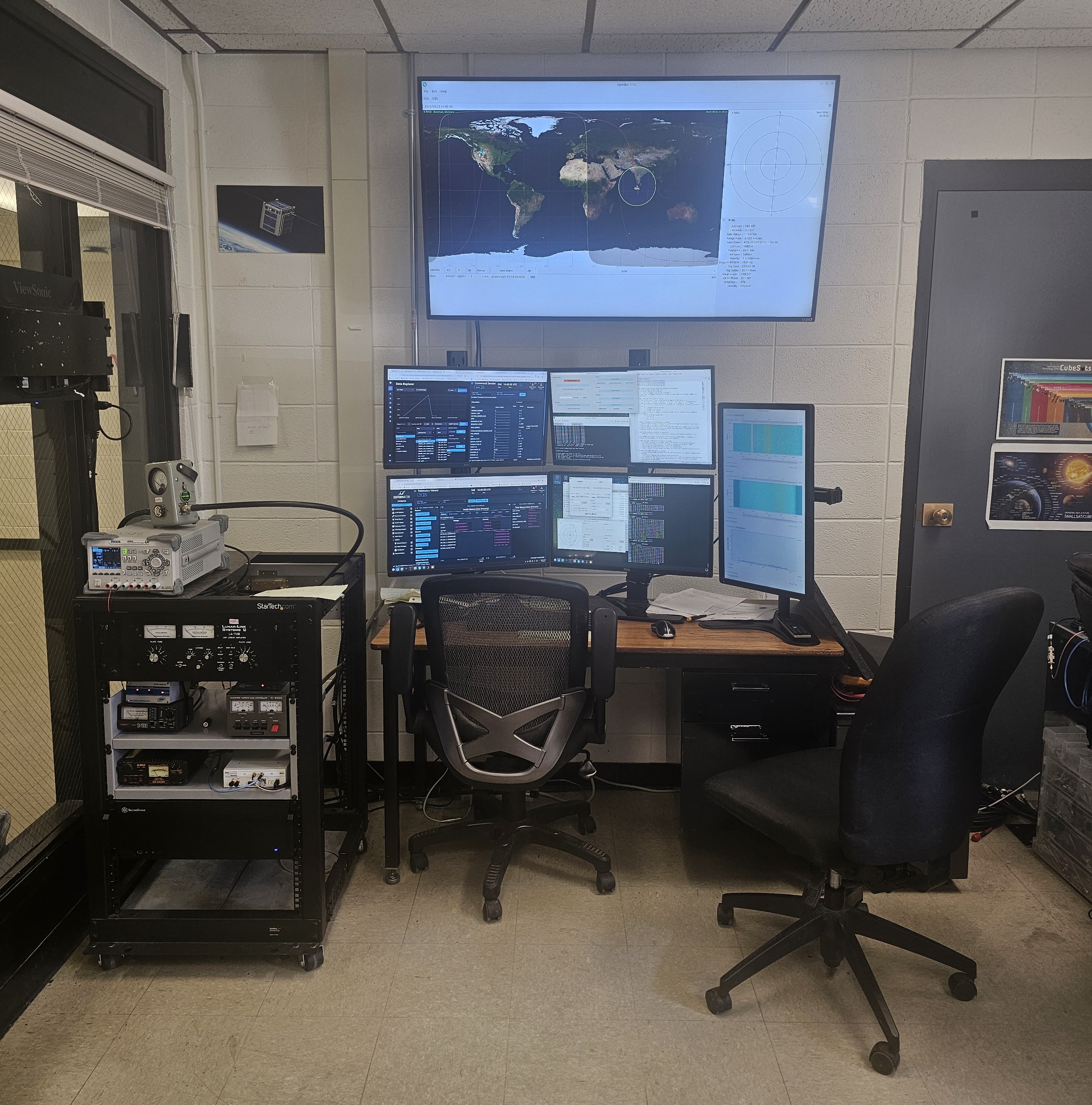Ground Station (K7MSU)

Overview
SSEL's ground station, callsign K7MSU, was setup to track SSEL satellites, as well as other amateur-band satellites. The system has evolved over the years and is on its third iteration designed to support the REAL satellite.
Architecture
K7MSU is located on the roof of Cobleigh Hall on the MSU campus in Bozeman, MT.
Antennas
Previous iterations of the ground station featured a VHF and UHF Yagi antenna array. These antennas were used for the HRBE, FIREBIRD, and IT-SPINS missions to varying degrees of success.
At the start of the REAL mission K7MSU used a pair of UHF Yagi antennas. One antenna had a frequency range of 395 to 405 MHz and was intended for usage in the VISORS project. The other antenna had a frequency range of 435 to 455 MHz and was the primary antenna used for communicating with REAL.
In the fall of 2025 twin UHF Yagi antennas were installed on K7MSU. The antennas are coupled together and cover the 435 to 455 MHz band. The antennas were intended to improve communications with REAL and more than accomplished that goal.
RF Pipeline
The first two iterations of K7MSU were based around an I-Com 910-H VHF/UHF transceiver and an Ettus Research USRP N200 software defined radio. The I-Com transeiver served as the RF pipeline for communicating with SSEL satellites, such as FIREBIRD and IT-SPINS. While the USRP N200 handled the more complex encoding and decoding operations.
The K7MSU of today, uses only an Ettus Research USRP N210 software defined radio as the RF pipeline. The SDR handles all RF operations, including both transmitting and receiving as well as encoding and decoding. Given the low power output of the SDR, a 60 W amplifier from RF-Links is used to raise K7MSU's output to a useable signal strength.
All iterations of K7MSU feature a supporting high-power amplifier, a Lunar-Link Systems LA-70B UHF amplifier. THis old vacuum tube amplifier has proved to be crucial in aiding in the establishment of communciations with SSEL satellites, notably REAL.
Motion Control
K7MSU has the capability to move and point its Yagi antenna array in the best possible orientation to communicate with SSEL satellites. All iterations of the K7MSU's motion control have used Yaesu G-5500 rotors and controllers. The Yaesu system has proven to be rugged and reliable over the years. Along with the antenna upgrade in the fall of 2025, the latest revision of the Yaesu system was installed. K7MSU now uses the G-5500DC system.
In order to enable automated tracking, K7MSU uses the Yaesu GS-232B, a RS-232 interface that communicates with the G-5500DC system.
Software
RF
The backbone of the K7MSU system lies in the SDR. Controlled and supported by a specially built rack-mounted computer, the SDR is defined by the open source project GNURadio. SSEL team members have spent countless hours developing and fine tuning a GNURadio flowgraph that has the flexibility to support multiple satellitles.
Tracking
In the past SSEL made use of the satellite tracking software NOVA. However, that software proved to be lacking certain features that allowed for control of the G-5500 system. Seeking an alternative, SSEL team members turned to internal development, which produced a GNURadio-based software called SuperNOVA. SuperNOVA served as K7MSU's tracking software for many years until lack of upkeep and documentation rendered it unusable for future missions.
Today, automated tracking is handled by a commonly used Python library known as gpredict. This library handles the arduous task of projecting the orbits of SSEL satellites and will issue commands to the G-5500 system via the serial interface provied by the GS-232B. The SSEL team has made a few modifications to gpredict that allow connections to the GNURadio flowgraph. These connections provide Doppler correction and automation in the selection of satellites actively being tracked in gpredict.
Con-Ops
While GNURadio is the backbone of K7MSU's operations there still remains a need for something to handle satellite-specific commanding and telemetry. Previous iterations of K7MSU solved this need using the proprietary software InControl, a commercial software package kindly provide by L3-Harris. The latest iteration of K7MSU depricated InControl in favor of the open source software package COSMOS from OpenC3. COSMOS now serves as the main inteface for communcating with the REAL satellite.

K7MSU ground station setup in SSEL's SOC
